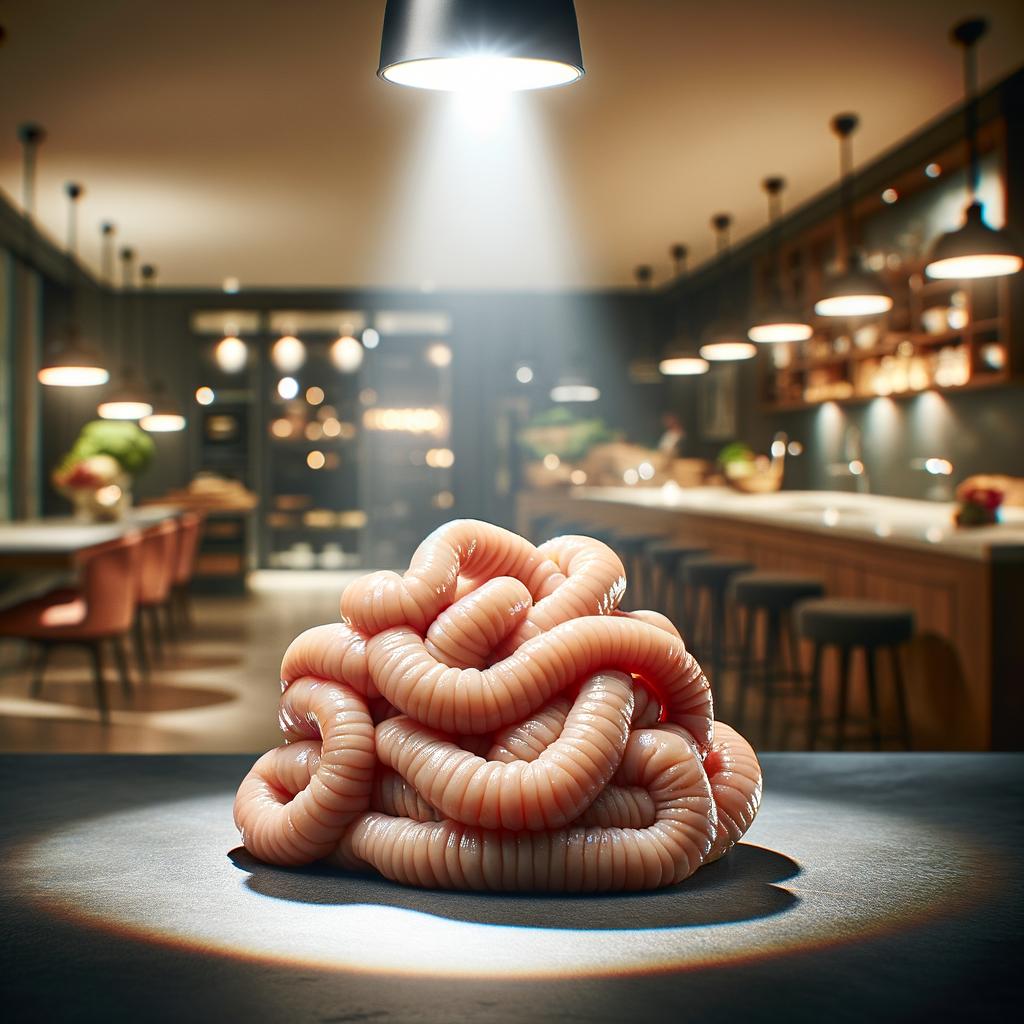Pork Intestine

Description
The pork intestine, often referred to as chitterlings or chitlins, is a delicacy that has been enjoyed by cultures around the world. The texture of the pork intestine is unmistakably unique, a delicate balance between chewy and tender, providing a satisfying mouthfeel. When properly cleaned and cooked, it takes on a mild, earthy flavor, absorbing the essence of the ingredients it's cooked with. Its appearance varies depending on the preparation, but typically it's a pale, creamy color that turns golden when fried. The unique characteristic of pork intestine is its transformative ability in terms of flavor and texture, depending upon the cooking method and the spices used.
Primary Uses
Pork intestine is a versatile ingredient used in a myriad of dishes worldwide. In Southern American cuisine, it's often boiled and served with hot sauce or vinegar. In Asian cuisines, it's commonly stir-fried, stewed, or used in hot pots. The French are known for their Andouillette, a sausage made with pork intestines. Beyond its culinary uses, the pork intestine has cultural significance in many societies, symbolizing prosperity and abundance. It is often served during festive occasions like New Year's celebrations.
History
The history of the pork intestine is a tale of resourcefulness and respect for the animal. From ancient times, cultures that raised pigs utilized every part of the animal, including the intestines, in a practice known as 'nose-to-tail' eating. This was not only out of respect for the animal but also out of necessity, as wasting food was not an option. Over time, the pork intestine has evolved from a food of necessity to a beloved delicacy. There are many stories and folklore associated with it. For example, in the American South, it's believed that eating pork intestine on New Year's Day brings good luck for the coming year.
Nutritional Information
Pork intestine is a rich source of protein, providing essential amino acids necessary for bodily functions. It also contains a significant amount of iron, a mineral vital for producing red blood cells. Compared to other cuts of pork, the intestine has a lower fat content, making it a leaner choice. However, it's important to note that pork intestine should be consumed in moderation due to its high cholesterol content. Its nutritional profile sets it apart from other offal, as it's one of the few that offers a high protein content with lower fat. As always, the key to a healthy diet is balance and moderation.

